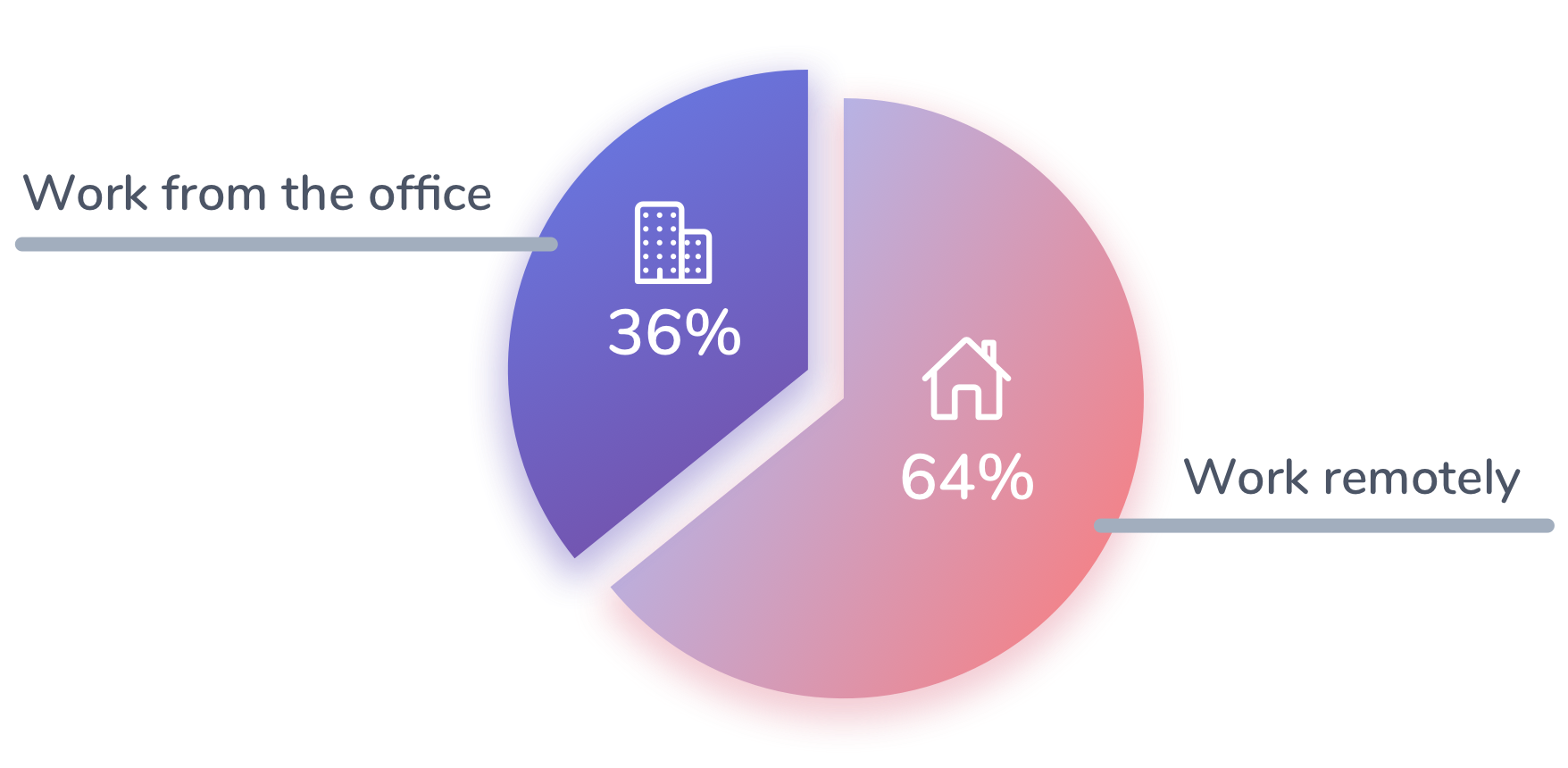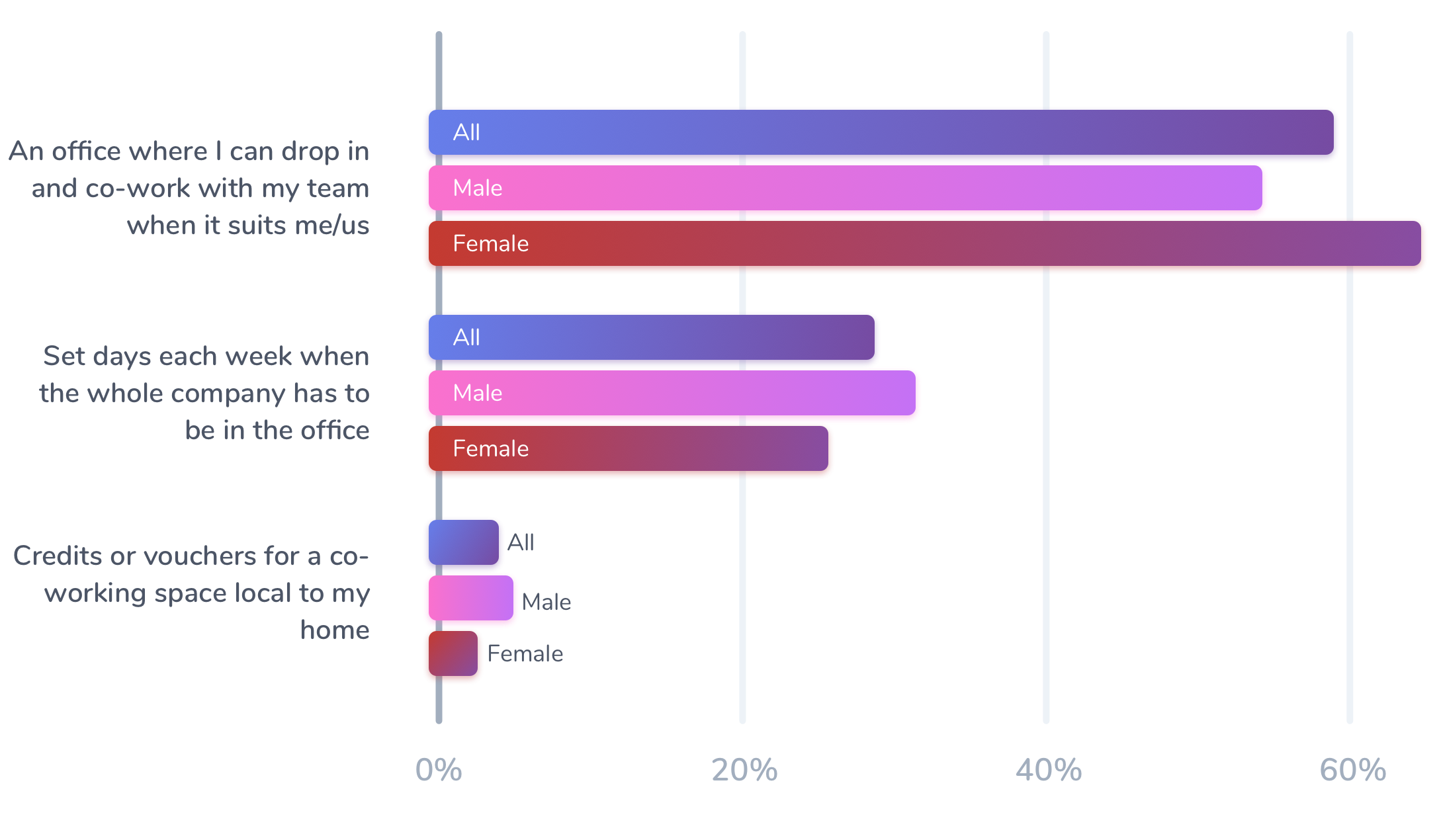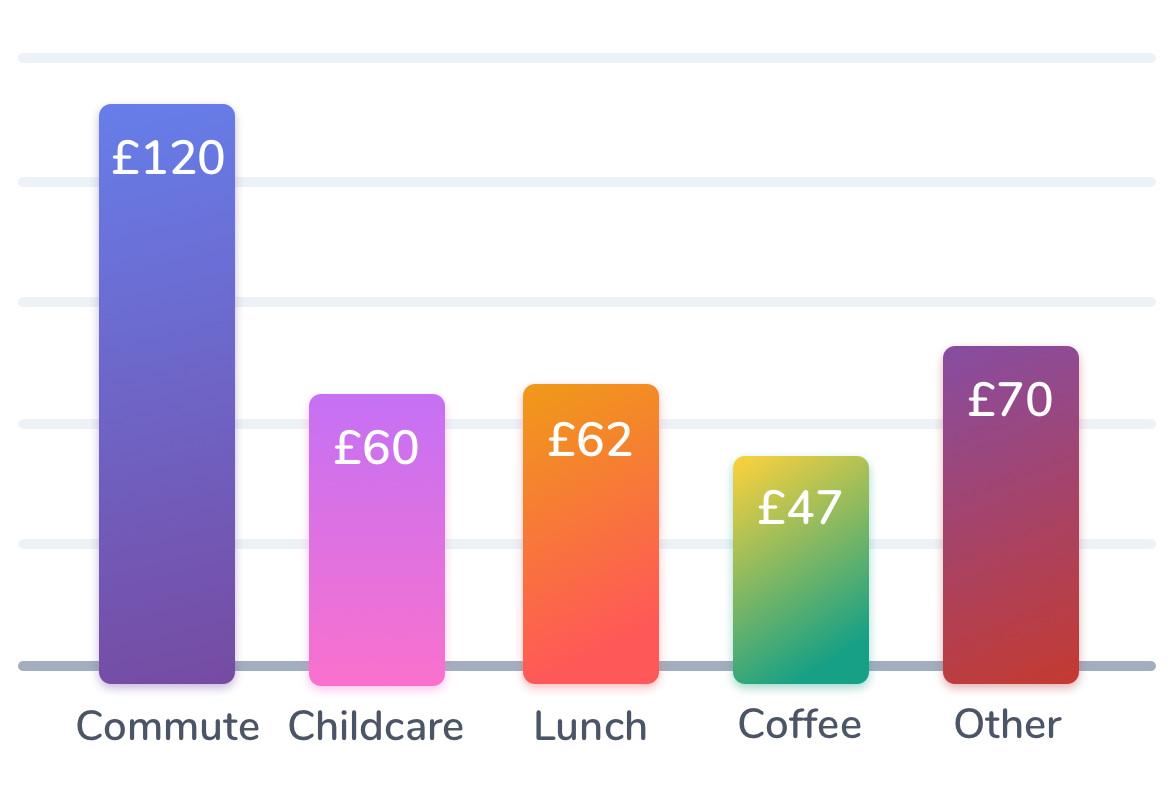Three Quarters Want a Split Between Home and Office Working Post Pandemic
Claromentis, 23 February, 2021
A new report by Claromentis reveals that 73% of UK workers want to split their time between home and office working after the pandemic.

Unilever, Twitter, Square and many more companies have announced their staff may never return to working a five-day week in the office. But what do workers want?
A new survey by digital workplace provider Claromentis reveals that, after lockdown ends and the threat of the pandemic subsides, almost three quarters (73%) of UK knowledge workers want a hybrid arrangement, splitting their time between home and the office.
Of the 73%, the average employee wants to work from home for around two thirds (64%) of their working week, and spend around a third (36%) of their time working from the office.
Six in 10 (60%) of those who favour a hybrid arrangement want the flexibility to drop in to the office and co-work with their team when it suits them, while 29% would prefer set days each week when the whole company has to be in the office. The least popular option is credits or vouchers for a co-working space local to their homes: only preferred by 5% of respondents.
More women (65%) than men (55%) would prefer the fluidity of an office they could drop into anytime. More men (32%) than women (26%) would prefer to have set days when the whole company has to be in the office each week.
By contrast, only a fifth (20%) of total respondents want to work remotely 100% of the time, while just 7% want to work from the office full time. Those aged 45-54 are the most likely age group to prefer working from home 100% of the time (26%) compared to just 15% of 18-24 year olds.73% of UK employees want to split their time between office and home
60% want the flexibility to choose what days they work from the office
41% prefer to work from home because of the financial savings
33% urgently want better communication and collaboration tools
Pros & cons of remote working
Of the respondents who generally prefer to work from home over working from the office, we asked them why. Just over four in 10 (41%) chose financial savings as the main reason behind it.
In one month of working from home, the average remote worker saves £120 per month in commute costs, £47 on coffee and refreshments, £62 on lunch and £70 on other costs. Parents save an additional £60 per month in reduced childcare costs.
The top 10 reasons for preferring to work remotely over going to the office are listed in order of popularity in the table below:| Rank | What are your top reasons for preferring to work remotely/from home over working from the office? (Select up to five) | % |
|---|---|---|
| 1 | Financial savings | 41.0% |
| 2 | I am more productive | 37.2% |
| 3 | I feel less stressed or anxious (positive impact on mental health) | 31.8% |
| 4 | I have always hated commuting | 31.3% |
| 5 | Fewer distractions | 26.4% |
| 6 | More time for health, fitness or wellness activities | 25.8% |
| 7 | It’s better for the environment | 25.5% |
| 8 | Less office politics | 25.2% |
| 9 | More quality time with my kids | 18.2% |
| 10 | More time for pursuing my hobbies or interests | 18.2% |
| “Strongly agree” | “Somewhat agree” | |
|---|---|---|
| In the next 3 years, I plan move to a rural area, enabled by remote working | 10.6% | 19.7% |
| In the next 3 years, I plan to travel more, enabled by remote working | 14.0% | 24.1% |
| In the next 3 years, I plan to live overseas, enabled by remote working | 9.0% | 15.5% |
- Missing colleagues and the social side of work (35%)
- Feeling disconnected from my team (30%)
- Fewer opportunities for interesting conversations (25%)
- Experiencing feelings of loneliness and isolation (24%)
- Too many pointless meetings and catch ups (24%)
That said, 37% “strongly agree” and 30% “somewhat agree” that the benefits of remote work outweigh any disadvantages.
What can employers do to improve remote work now?
Nine in 10 employees have spotted ways their employer could improve productivity for the remote workforce.
- The most popular option, selected by 38% of respondents, is to offer more flexibility around working hours, so that people can choose to work work evenings and weekends rather than traditional hours if it suits them better. This is favoured by more women (43%) than men (34%).
- In second place, chosen by 37%, is cutting down on pointless, time-wasting meetings, an option preferred by more men (40%) than women (35%).
- And in third place is greater investment in tech hardware – including newer, faster computers – desired by a third (34%) of respondents. This technology is especially important to 25-34 year olds: 38% feel it is even more important for their productivity than cutting down on pointless meetings (34%).
Survey respondents were also asked to highlight urgent and non-urgent areas for improvement in their companies. Most pressing is better mental health provision, flagged as an urgent area for improvement by 39% of employees.
Many employees think that the following are urgently required to better support a remote workforce: improved collaboration and communication tools (33%) – as shown in the chart below – more opportunities for e-learning and training (33%), a stronger culture in the digital workplace (31%), more streamlined technology instead of fragmented apps (30%) and decent project management tools (29%).
Meanwhile, many businesses are not yet paperless: 30% of employees say automating paper processes is an urgent area for improvement in their companies. But this is a bigger problem in medium-sized businesses of 251-999 employees, where 36% identify this as an urgent area to improve.Nigel Davies, CEO & founder of digital workplace Claromentis, says:
“Our survey, undertaken during the third national COVID-19 lockdown, suggests a ‘best of both’ remote-office arrangement, with plenty of flexibility, is the future for knowledge work. And this arrangement would certainly dilute the downsides of remote work, which can include feeling socially disconnected, while teams enjoy the many benefits.
“It’s at this point in time – many months into this grand-scale, forced remote work experiment – that leaders can start to be less reactive and more proactive, and find meaningful ways to improve the home working experience based on what we’ve learnt so far. There are many opportunities for improvement, not least building a digital workplace that supports good communication, collaboration, project management, continuous learning and culture.”
Survey methodology:
1,017 UK knowledge worker employees were surveyed by Censuswide on behalf of Claromentis between 5-9 Feb 2021 during the third national lockdown. All had worked from home full time for at least 4 months since the start of COVID-19. Knowledge worker is defined here as a white collar worker who can do their jobs from computers.
For questions about this survey, please contact:
Tartle Media
team@tartlemedia.co.uk
About Claromentis:
Claromentis is a digital workplace serving teams that need to collaborate and work smarter. We launched the same year Google.com was registered as a domain and Apple launched the iMac, so we’ve had more than 20 years to evolve. In that time, we’ve written well over 1M lines of code and our software has been used by more than half a million people, in hundreds of companies all over the world, from the NHS to the Golden State Warriors.
Our knowledge-based digital workplace brings vital functions – like information management, people profiles, internal communications, policies, training, workflows and project management – into one integrated place to call home.







